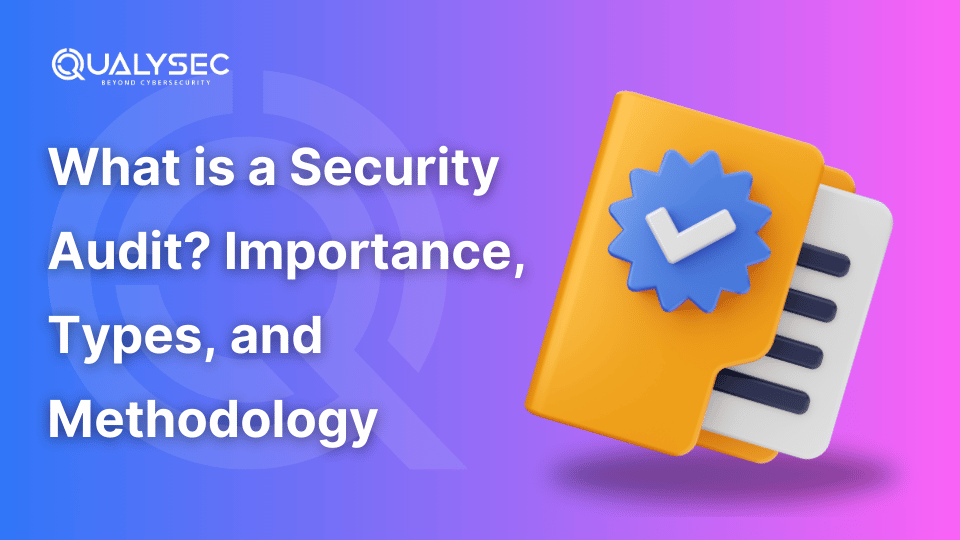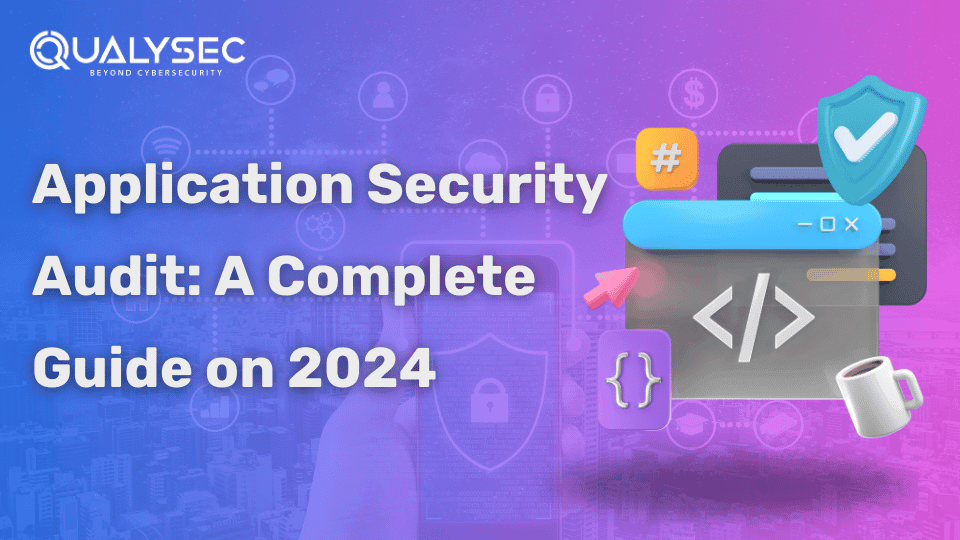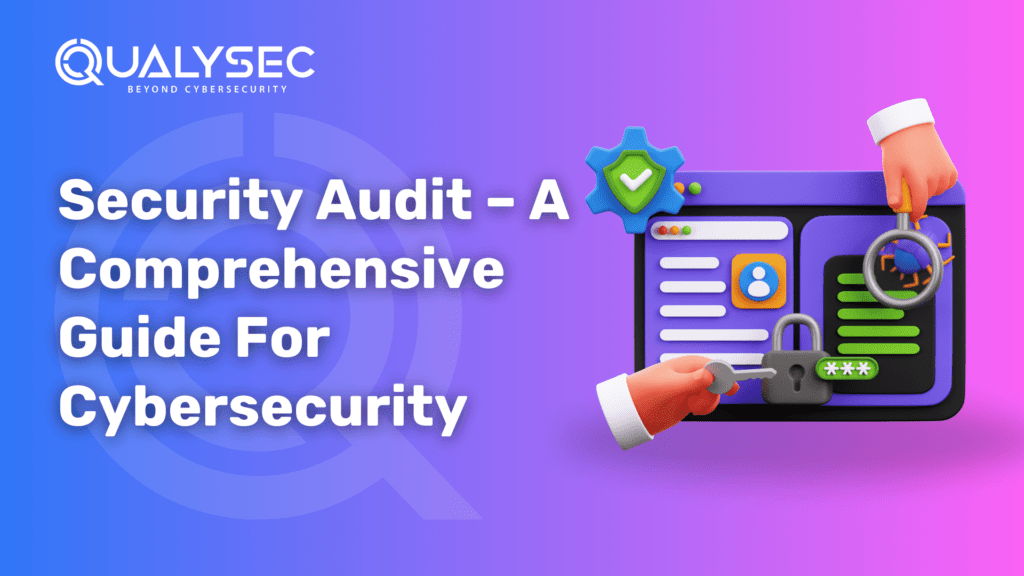What is a Security Audit? Importance, Types, and Methodology
Cybersecurity is a top priority for businesses of all kinds in the current digital era. The necessity for strong security measures is now more critical than ever as cyber-attacks become more sophisticated (According to recent reports, the global cost of cybercrime will reach $9.4 million in 2024). Regular security audits are among the best strategies for guaranteeing the safety of an organization’s information systems. Hence, this blog will explore security audit definitions, significance, types, and procedures. Along with offering guidance on how to perform security audits, how often to conduct them, and a comprehensive security audit checklist. Additionally, it will also discuss the distinctions between vulnerability assessments, penetration tests, and security audits. What Is a Security Audit? A security audit thoroughly assesses how effectively an information system aligns with pre-established criteria, determining the system’s security for an organization. This comprehensive evaluation encompasses information processing procedures, software, hardware, and user practices. Additionally, security audits are necessary to comply with various industry regulations such as: Moreover, the primary objective is to identify potential vulnerabilities that malicious actors could exploit, ensuring that security controls comply with relevant laws and regulations. How Does a Security Audit Work? During a security audit, auditors closely examine an organization’s information systems, policies, and procedures to detect flaws and assure compliance with security regulations. The process involves careful planning, identification of critical assets, and risk evaluation. Auditors review data protection protocols, access restrictions, and system configurations. They also conduct vulnerability assessments and penetration tests to uncover vulnerabilities. The findings are documented in a report that pinpoints weak areas and proposes remedial actions. Post-audit verification is done to ensure the implementation of corrective measures. Therefore, this comprehensive procedure is crucial in fortifying the organization’s systems and data against security risks, unauthorized access, and data breaches. Importance of Security Audits Security audits are essential for several reasons: Types of Security Audits There are several sorts of security audits, each with different goals. 1. Internal Audits: The organization’s staff carries out an audit to assess the internal control mechanisms and procedures. 2. External Audits: A certified third-party assessment team conducts security audits or penetration testing to give an impartial opinion about the organization’s security status. 3. Compliance Audits: The goal of a security compliance audit is to identify areas where the organization’s compliance is lacking and ensure it complies with regulatory standards. 4. Operational Audits: Assess the adequacy and efficacy of security measures in operations. 5. Technical Audits: Includes detailed examination of technical issues relating to the organization’s information systems, including network, application, and database security. Security Audits VS. Penetration Testing and Vulnerability Assessments Although vulnerability assessments, penetration testing, and security audits are all essential elements of a thorough security plan, their functions differ: Vulnerability Assessments Penetration Testing Security Audit Systems are scanned for known vulnerabilities as part of vulnerability assessments. Vulnerability assessments detect, classify, and identify vulnerabilities without necessarily attacking them, unlike penetration testing, which actively exploits weaknesses. Hence, organizations can identify known dangers to which they are exposed and prioritize maintenance activities using this procedure. The goal of penetration testing is to find vulnerable areas through targeted assault simulation. Although it is frequently carried out as an independent evaluation, it can also be a part of a more extensive security audit. Pen testers offer an insider’s view of how an attacker might compromise a system by employing various tools and tactics to get prior safety precautions. In addition to reviewing policies, procedures, and standard compliance, a security audit includes vulnerability assessments and penetration testing. It offers a comprehensive perspective of an organization’s security posture to ensure that each security component is covered. What Does a Security Audit Consist of? A security audit thoroughly examines an organization’s information system to ensure it adheres to security regulations and preserves data availability, confidentiality, and integrity. Hence, it typically consists of the following basic elements: 1. Scope Definition A security audit can be defined as the initial stage of the process that includes determining the systems, applications, or networks to be investigated. Therefore, this means defining essential assets, data kinds, and risks to prioritize what kind of audit is necessary and where there is the most danger. 2. Checking up on Current Security Policies To check the balance and relevance, auditors also look at the existing policies on security. Evaluate policies and processes for access control, data protection, and overall regulatory compliance to determine whether risk mitigation is effective. 3. Vulnerability Scanning Software programs perform network and system scans to look for security gaps. This process reveals threats like insecure software, improper configurations, and unpatched systems, which may invite attackers. 4. Penetration Testing Penetration testing emulates real-life attacks to evaluate the efficiency of applied security measures and reveal the other vulnerabilities that could remain unnoticed. this method uses both automated tools and manual testing methods to discover maximum security vulnerabilities in the system. 5. Analysis of Network Security This step includes studying the structural design and specifications of networks. Auditors analyze the specifics of the firewall and other security products and check encryption and other methods to prevent intrusion from the outside and internal threats. Why Do Companies Need Security Audit? Companies need security audits for several compelling reasons: Protecting Sensitive Information Protecting the privacy, accuracy, and accessibility of sensitive data. Regulatory Compliance To ensure that legal penalties are avoided and that industries adhere to the standards and legal requirements set out by the law. Preventing Data Breaches Preventing loopholes that the attacker can exploit to their advantage. Enhancing Trust Securing consumer, business, and stakeholder relationships by proving that security is a corporate priority. Have you conducted a security audit for your company recently? Do not fear; get in touch with us to receive cybersecurity audit services right away! Talk to our Cybersecurity Expert to discuss your specific needs and how we can help your business. Schedule a Call How Do You Perform a Security Audit? Conducting a security audit involves multiple steps, whether it’s a data security audit, cybersecurity audit, IT security audit, SOC






